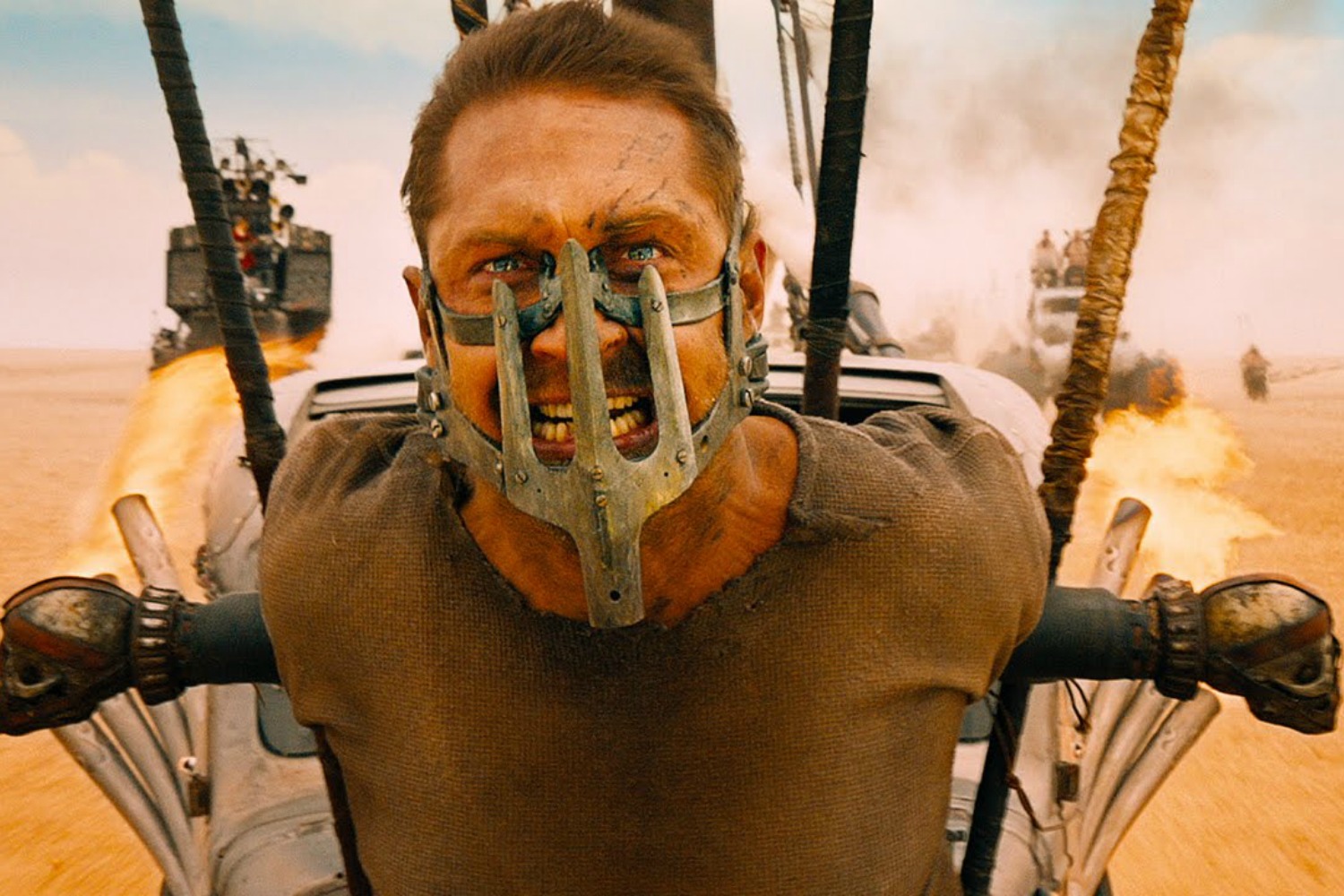Last week, we featured a reflection from Dr. Dan Allender about Spotlight, winner of the 2016 Best Picture Oscar. Now we turn to another big winner from this year’s Academy Awards: Mad Max: Fury Road, which received an impressive 10 Oscar nominations and 6 wins. Here, Kate Rae Davis, Human Resources Generalist and 2015 Master of Divinity graduate, writes about how Mad Max’s oppression under the empire reminds her of the cross and the brutality suffered by Jesus at the hands of another empire. As we continue to move through Lent, may Kate’s words invite us to remember the stark, unsettling, and profound reality of Jesus’ death. This post originally appeared on Kate’s Literate Theology blog.
In the opening scenes of Mad Max: Fury Road (2015), we see Max (Tom Hardy) captured by War Boys of the Citadel. A prisoner of this empire, his body is under their control. The empire enlists him into service, finding use in him as an unwilling blood donor. An IV runs directly from his vein into the arm of Nux (Nicholas Hoult), one of the many ailing War Boys. When the call comes for the boys to fight, Nux orders that his “blood bag,” Max, be chained to him so that he can drive into the battle.
And so it is that we find Max, our title hero, chained to the front of a speeding car as though he were a wooden figurehead on the prow of a Roman ship.
For most military ornamentation, the purpose is to demonstrate the wealth and power of the empire. An empire that has resources to put into unnecessary embellishment and decoration is certainly an empire with abundance, with surplus—an empire that rules enough land and manpower to produce such extravagance.
But here, in a land with few natural resources (Immortan Joe controls the people through controlling the water supply), there is no gold to be mined nor trees to be cut down for a figurehead. But what they do have is this prisoner; the Citadel shows its power through controlling Max’s body. It is impractical to do so; he’d be a much safer resource tucked behind the driver’s seat. But he’s up front, sand in his eyes, his weight a nuisance to the movement of the vehicle, so that this empire can show their might.
The empire controls the level of danger into which his body is placed. The empire controls his level of discomfort. The empire controls the pace at which his life-blood is drained from him.
In this sense, Max the Figurehead may be one of the best images our contemporary culture has of Jesus the Crucified One.
Jesus, like Max, was a prisoner of the empire. His body was used to demonstrate the empire’s control. The Roman empire used crosses the way naval ships and Nux use figureheads, as a symbol to say: We are strong enough to not only kill, but to control. We are strong enough to kill slowly, strong enough to control the blood’s slow draining.
As a culture, we have lost our disgust in response to the cross. The cross, today, is a decoration on the wall of our home, an ornamental tattoo on our shoulder, a bejeweled trinket that hangs on our necklace. We talk about finding comfort in the cross. We don’t feel any of the guttural responses the cross evoked in first century peoples living in fear of the empire. We don’t feel, in our guts, the repulsion, the deprivation, the dehumanizing cruelty that must occur in order to hang a body on a plank in the desert.
Max, the Mad One, the Holy One is here to show us: there is no comfort in the cross. This image of a man cruelly and unnecessarily hanging from the front of a speeding car, this man whose lifeblood is dripping from him, helps shape our understanding of what we are no longer able to see in the cross. This image in culture helps inform the image in religion. This image helps us to re-find—in our guts, in our disgust—the scandal of the crucifixion.
For just imagine, for a moment, that that man being used as a hood ornament is the Child of God, the Word made flesh, the hope and salvation of the world, the promised Holy One.
This post is part of an ongoing series about Mad Max over at Literate Theology. We highly recommend “Mad Max: Fury Road & Competing Hopes.”

